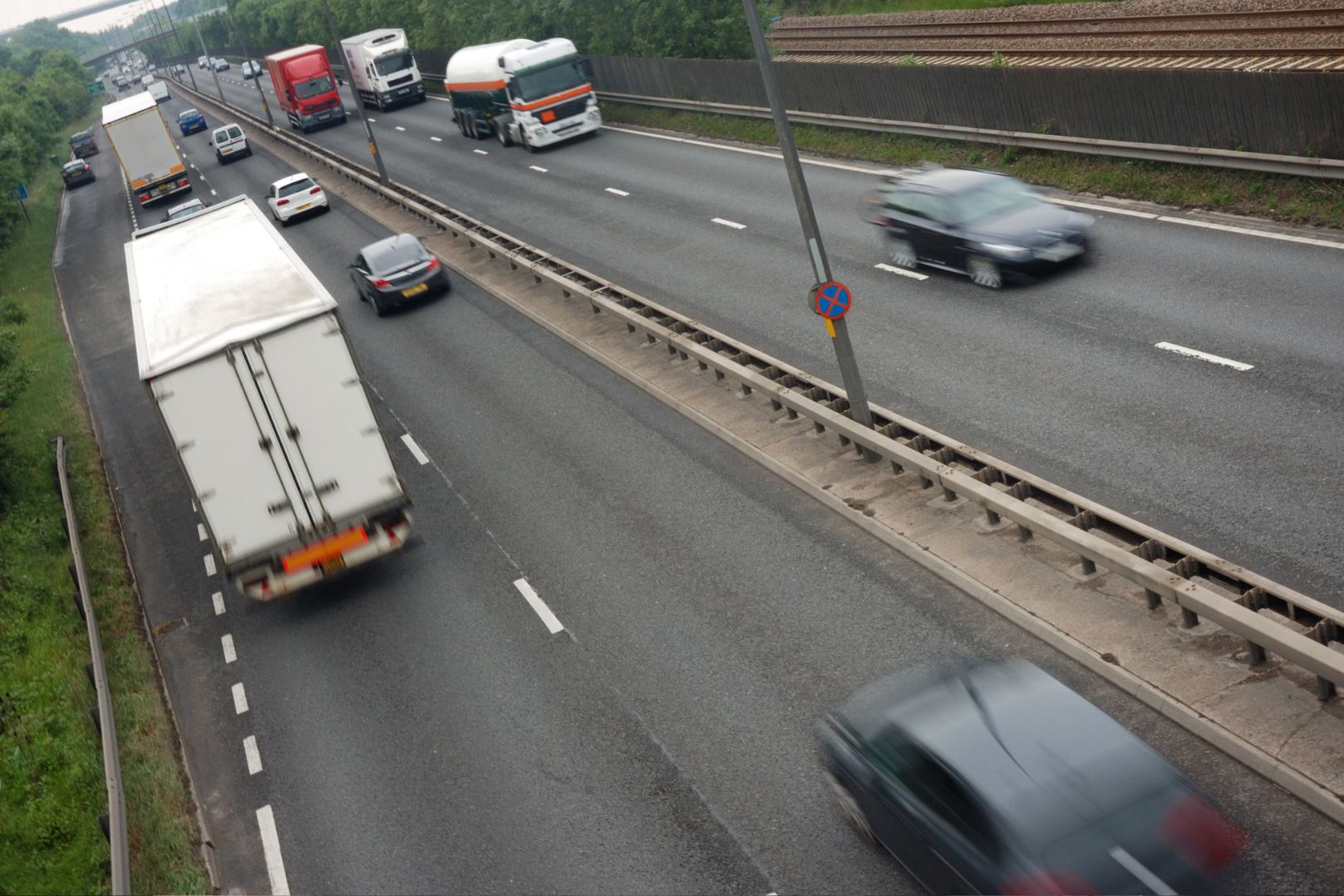Welcome to the world of car shipping, where the journey of transporting your beloved vehicle from one location to another begins. Whether you’re relocating, buying or selling a car online, or simply need to move your vehicle across long distances, ensuring a successful car shipping experience is crucial.
This comprehensive guide brings you 10 expert tips that will empower you with the knowledge and strategies needed to navigate the car shipping process with ease and confidence.
Research and Preparation
Before embarking on your car shipping journey, it’s essential to have a solid understanding of the car shipping process and the different types of services available. This knowledge will help you make informed decisions and ensure a smooth experience.

Car shipping involves the transportation of vehicles from one location to another using specialized carriers. The process typically starts with the selection of a car shipping company, followed by the arrangement of transportation and coordination of pickup and delivery. During transit, your vehicle will be secured and transported to the destination.
There are various options for car shipping services, each catering to different needs and preferences. Some common types include:
1. Open transport:
This is the most common and cost-effective option. Your vehicle will be transported on an open trailer along with other vehicles. While it offers affordability, your car will be exposed to the elements during transit.
2. Enclosed transport:
With enclosed transport, your vehicle will be placed in a fully covered trailer. This provides additional protection against weather conditions, road debris, and other potential risks. Enclosed transport is ideal for high-value or classic vehicles that require extra care.
3. Door-to-door delivery:
This service allows for convenient pickup and delivery of your vehicle at your specified locations. The car shipping company will pick up your vehicle from your current address and deliver it to your desired destination, eliminating the need for additional transportation.
Understanding the intricacies of the car shipping process and familiarizing yourself with the different types of services will help you determine the most suitable option for your needs and ensure a successful car shipping experience.

When it comes to car shipping, proper preparation of your vehicle is key to ensuring its safe and secure transport. Follow these essential steps to get your car ready for the journey ahead.
1. Importance of cleaning your vehicle before shipping
Giving your car a thorough cleaning before shipping serves multiple purposes. Firstly, it allows for a better inspection of the vehicle’s condition before transport. Secondly, it helps protect the interior and exterior from potential damage during transit. Lastly, a clean car ensures a positive impression upon delivery.
2. Cleaning the interior and exterior of your car
Start by removing any personal items from the car’s interior. Vacuum the seats and floors, and wipe down the dashboard and other surfaces. For the exterior, wash the car, including the wheels and undercarriage, and apply a protective wax coating.
1. Why documentation is essential
Documenting the current condition of your vehicle is crucial for insurance purposes and to ensure any potential damages during transit are properly addressed. It provides a baseline for comparison upon delivery.
2. Step-by-step guide to documenting and photographing your vehicle
- Start by noting any existing scratches, dents, or other visible damages in a written record.
- Take clear, high-quality photographs of your car from various angles, capturing both the overall condition and any pre-existing damage. Make sure to focus on specific areas of concern.
1. Reasons to remove personal belongings from your car
It’s essential to remove personal items from your vehicle before shipping for several reasons. First, car shipping companies typically have restrictions on transporting personal belongings for safety and liability reasons. Second, removing personal items reduces the risk of theft or damage during transit.
2. Tips for removing personal items effectively
Take the time to thoroughly clean out your car and remove any personal belongings. Check the trunk, glove compartment, and all storage compartments. Remember to also remove any removable accessories, such as GPS devices or aftermarket stereo systems.
1. Importance of ensuring your vehicle is in good condition
Ensuring that your vehicle is in good working condition before shipping minimizes the risk of mechanical issues during transit. It also helps maintain the safety and integrity of your vehicle throughout the journey.
2. Recommended maintenance and repairs before shipping
Prioritize basic maintenance tasks such as checking tire pressure, fluid levels, and battery health. If there are any noticeable issues, consider getting them repaired by a qualified mechanic to avoid complications during transport.
By thoroughly cleaning your vehicle, documenting its condition, removing personal belongings, and performing necessary maintenance, you’ll be well-prepared to entrust your car to the shipping process with peace of mind.

As you prepare to ship your car, it’s crucial to make informed decisions when it comes to booking and scheduling the shipment. This section will guide you through the necessary steps to ensure a smooth and well-organized car shipping experience.
1. Understanding different shipping methods
Shipping companies offer various methods to transport your vehicle, each with its advantages and considerations. Familiarize yourself with the following options:
a. Open transport: This popular and cost-effective method involves transporting your car on an open trailer, exposing it to the elements.
b. Enclosed transport: Opting for enclosed transport provides your vehicle with extra protection, as it is securely placed in a fully covered trailer away from potential risks such as weather or road debris.
2. Factors to consider when selecting the shipping method
When deciding on a shipping method, take into account factors such as budget, the value of your vehicle, weather conditions, and your personal preferences. Consider the level of protection your car requires and choose a method that aligns with your needs and priorities.
1. Timing considerations for car shipping
Take into account the time it takes to arrange car shipping services. Depending on the shipping company’s availability and the distance your vehicle needs to travel, it’s important to plan. Remember to consider any potential seasonal fluctuations in demand.
2. Scheduling the shipment in advance
To secure a spot with your preferred shipping company and ensure a smooth process, it’s advisable to schedule your car shipment well in advance. Provide the shipping company with the necessary details, including the desired pick-up and delivery dates, to facilitate a timely and organized shipment.
1. Double-checking all the information provided
Before finalizing the booking, review all the details provided to the shipping company. Ensure that your contact information, pick-up and delivery addresses, and any special instructions are accurate. Double-checking these details will help avoid any unnecessary complications during the shipping process.
2. Confirming the pick-up and delivery locations
Contact the shipping company to confirm the exact pick-up and delivery locations. Provide any specific instructions or access information that may be required at each location. This verification step ensures a smooth transition and prevents any confusion or delays.
Carefully choosing the right shipping method, planning your shipping schedule, and confirming all the necessary details, you’ll set the stage for a seamless car shipping experience. Now, let’s move on to the next steps in our journey to success.

As the day of pickup approaches, it’s crucial to prepare your vehicle for its journey. Taking the necessary steps to ensure the safety and security of your car will help facilitate a smooth and worry-free experience. Let’s delve into the preparations needed before pickup and delivery.
1. How to handle external accessories before shipping
Before your car is loaded onto the carrier, it’s important to remove or securely fasten any external accessories. This includes items such as bike racks, spoilers, or roof racks. Safely storing or securing these accessories will prevent any damage or loss during transit.
2. Steps to secure removable accessories
If removing the accessories is not feasible, take the necessary precautions to secure them. Use proper fasteners, straps, or locks to ensure that they are tightly and securely attached to the vehicle. This will minimize the risk of damage or detachment during transport.
1. Disabling the car alarm system
Before handing over your vehicle, disable any car alarm systems to avoid any unintended activation during transit. This will prevent unnecessary disturbances and ensure a smooth journey for your car.
2. Ensuring the security of your vehicle during transit
Take additional security measures to protect your vehicle during transport. Ensure that all windows are closed, doors are locked, and any convertible tops or sunroofs are securely fastened. Consider parking your car in a secure and well-lit area leading up to the pickup day.
1. Important documents to have on hand
Before the pickup, gather all relevant documents related to your vehicle, such as vehicle registration, insurance papers, and any permits required for shipping. Having these documents readily available will streamline the process and provide the necessary information if needed and in most cases these documents are only needed when transporting a vehicle internationally.
2. Making copies for your records
It’s advisable to make copies of all the documents for your records. This way, you’ll have a backup in case of any unforeseen circumstances or if the originals are misplaced. Keep the copies in a safe place for easy access when needed.
Taking the time to remove or secure external accessories, disable alarms, and have copies of important documents will contribute to a successful and hassle-free car shipping experience.

When your vehicle is in transit, it’s important to stay connected and informed. Effective communication with the shipping company and tracking your vehicle’s progress will give you peace of mind and ensure a smooth car shipping experience. Let’s explore these aspects in detail.
1. Establishing a communication channel with the shipping company
From the moment you book your car shipment, establish a reliable communication channel with the shipping company. Ensure you have the contact information of a designated representative or coordinator who can assist you throughout the process. Having a direct point of contact will make it easier to address any questions or concerns that may arise.
2. Staying informed about the progress of your shipment
Regular updates on the progress of your shipment are essential for your peace of mind. Stay proactive by requesting updates from the shipping company. This will allow you to stay informed about the current location of your vehicle and any potential changes in the estimated delivery timeframe. Open and timely communication ensures that you are aware of the status of your car at all times.
1. Tracking options available during the shipping process
Many car shipping companies provide tracking options to help you monitor your vehicle’s progress. These options may include online tracking portals, mobile apps, or regular notifications via email or text messages. Inquire about the tracking options available when you book your shipment to choose the one that suits your preferences.
2. How to track your vehicle’s progress
Once you have access to tracking services, make the most of them to stay updated on your vehicle’s journey. Use the provided tracking tools to monitor the current location of your car, estimated arrival times, and any significant milestones during transit. Tracking your vehicle’s progress empowers you with real-time information and allows you to plan for its arrival accordingly.

Despite careful planning, there are instances where issues or delays may arise during the car shipping process. It’s important to be aware of these common challenges and know how to address them effectively. Here are some common issues and delays you might encounter:
a. Weather conditions
Inclement weather, such as storms or heavy snowfall, can affect transportation routes and cause delays in car shipping. While shipping companies do their best to navigate through such conditions, it’s important to understand that safety comes first. In such cases, delays are often unavoidable, and it’s crucial to stay patient and flexible.
b. Mechanical issues
Just like any vehicle, the carrier truck used for shipping may experience mechanical problems during transit. These can range from minor repairs to more significant issues that require additional time to resolve. While shipping companies strive to maintain their fleets in optimal condition, occasional mechanical delays may occur. Stay in touch with the shipping company to receive updates and alternative arrangements, if necessary.
c. Traffic or road conditions
Unforeseen traffic congestion or road closures can affect the estimated delivery time for your vehicle. Shipping companies carefully plan their routes, but unpredictable situations can arise. Stay in contact with the shipping company for any updates on potential delays caused by traffic or road conditions.
d. Documentation or customs issues
When shipping internationally or across borders, customs clearance and documentation requirements can sometimes cause delays. Ensure you have all the necessary paperwork in order and provide accurate information to avoid any unnecessary hold-ups. If there are any issues with customs clearance, work closely with the shipping company to resolve them promptly.
e. Carrier scheduling conflicts
Shipping companies manage multiple shipments simultaneously, and occasionally scheduling conflicts can occur. This may result in delays as they work to optimize the logistics of their operations. Effective communication with the shipping company will help you stay informed about any changes to the delivery schedule and enable you to adjust your plans accordingly.
It’s essential to maintain open communication with the shipping company throughout the shipping process. If you encounter any issues or experience delays, reach out to them promptly. By addressing potential problems head-on and working collaboratively, you can find solutions and minimize disruptions to ensure a successful car shipping experience.
If you encounter any issues or experience delays during the car shipping process, reach out to the shipping company immediately. Promptly addressing any problems that arise during transit is crucial to ensuring a successful car shipping experience. Here are some steps you can take to effectively resolve issues:
1. Contact the shipping company
As soon as you notice any issues or experience delays, reach out to the shipping company without delay. Contact the designated representative or coordinator responsible for your shipment. Provide them with a clear and detailed explanation of the problem you’re facing.
2. Maintain a calm and professional demeanour
When communicating with the shipping company, it’s important to remain calm and composed. Clearly explain the situation, expressing your concerns and expectations while maintaining a respectful tone. A professional approach will foster constructive dialogue and increase the chances of a satisfactory resolution.
3. Document the issue
Take photographs or videos of any damages or issues you encounter upon delivery or during transit. Visual evidence will provide support for your claim and help resolve disputes more efficiently. Make sure to note any relevant details, such as date, time, and specific concerns.
4. Follow the shipping company’s procedures
Each shipping company will have its procedures and protocols for handling issues or disputes. Familiarize yourself with these guidelines and follow them accordingly. This may involve completing specific forms, providing documentation, or adhering to specific communication channels.
5. Maintain thorough records
Keep a record of all interactions, including dates, times, names, and details of conversations with the shipping company. Additionally, save copies of any written communication, such as emails or letters exchanged. These records will be valuable if you need to escalate the issue or file a formal complaint.
6. Seek resolution through negotiation
Engage in a constructive dialogue with the shipping company to find a mutually agreeable solution. Discuss possible alternatives, such as compensation for damages, repair options, or expedited shipping if applicable. Strive for a resolution that meets your expectations while considering the shipping company’s policies and limitations.
7. Escalate the matter if necessary
If you are unable to reach a satisfactory resolution with the shipping company directly, consider escalating the issue to a higher level of authority within the company. This may involve speaking with a supervisor or manager who has the authority to address your concerns more effectively.
8. File a formal complaint if needed
If all attempts to resolve the issue directly with the shipping company fail, you may consider filing a formal complaint. Research the appropriate regulatory bodies or consumer protection agencies that oversee the shipping industry in your region. Follow their procedures for filing a complaint and seek their assistance in resolving the matter.
Remember, effective communication, documentation, and a persistent yet respectful approach will increase the likelihood of a positive outcome when addressing issues or delays during the car shipping process.
This transparency enables you to stay informed, address any concerns promptly, and make necessary arrangements for the delivery of your vehicle. Stay connected and track your vehicle’s journey for a successful and worry-free car shipping experience.
After the shipping process, it’s an exciting moment when your vehicle arrives at its destination. However, before you drive off, it’s important to take certain steps to ensure a smooth transition. Let’s explore the key aspects of receiving your vehicle.
1. Importance of inspecting your vehicle upon delivery
When your vehicle arrives, it’s crucial to conduct a thorough inspection to check for any damages or issues that may have occurred during transit. Inspecting your vehicle allows you to identify and address any concerns immediately, ensuring that you have a clear record of its condition upon delivery.
2. Conducting a thorough inspection
Take your time to inspect your vehicle carefully. Start by examining the exterior for any dents, scratches, or signs of damage. Check the windows, mirrors, and lights to ensure they are intact and functioning properly. Move on to the interior and inspect the seats, dashboard, and other components for any visible damages or discrepancies. Don’t forget to check the trunk or cargo area as well. Note down any findings or concerns during the inspection process.
1. How to document and report any damages
It’s essential to document any damages or issues you find during the inspection. Take clear and detailed photographs of the damage from different angles. Make sure to capture close-up shots that clearly show the extent of the damage. Additionally, write down a detailed description of the damages, noting the specific areas affected.
2. Taking appropriate actions if damages occur
If you discover any damages, it’s important to report them to the shipping company as soon as possible. Contact the company and provide them with the documented evidence, including the photographs and description of the damages. They will guide you through the necessary steps to address the situation, which may involve filing a claim or arranging for repairs.

Are you planning to ship your car but feeling overwhelmed by the process? Look no further! At Ship A Car, we understand the importance of a safe and hassle-free car shipping experience. With our reliable services and expert team, we are here to make your car shipping journey a breeze.
1. Trustworthy and Reliable Service
When it comes to shipping your valuable vehicle, trust is of utmost importance. With SAC, you can rest assured that your car is in safe hands. We have years of experience in the industry, and our track record speaks for itself. Countless satisfied customers have entrusted us with their vehicles, and we take pride in delivering exceptional service every step of the way.
2. Comprehensive Insurance Coverage
We understand that your car is not just a mode of transportation; it’s a valuable asset. That’s why we provide comprehensive insurance coverage for your vehicle during transit. Our insurance policy is designed to give you peace of mind, knowing that your car is protected against any unforeseen circumstances. Your vehicle’s safety is our top priority.
3. Expert Handling and Care
Our team consists of experienced professionals who are well-versed in handling various types of vehicles. Whether you have a classic car, luxury vehicle, or everyday sedan, we have the expertise to handle it with care. We follow strict protocols and industry best practices to ensure that your car is loaded, secured, and transported safely to its destination.
4. State-of-the-Art Equipment and Facilities
To ensure the safety of your vehicle, we have invested in state-of-the-art equipment and facilities. Our loading and unloading processes are designed to minimize the risk of any damage. We have modern carriers and secure storage facilities to accommodate different types of vehicles, providing optimal protection throughout the shipping process.
5. Transparent and Efficient Communication
We believe in building strong relationships with our customers based on trust and transparency. Our dedicated customer support team is available to answer your queries and provide updates on the progress of your shipment. We understand that effective communication is essential, and we strive to keep you informed every step of the way.
6. Assurance of Satisfaction
At Ship A Car, Inc., customer satisfaction is our ultimate goal. We go above and beyond to ensure that your car shipping experience exceeds your expectations. From the moment you contact us until your vehicle is safely delivered, we are committed to providing a seamless and stress-free process. Your satisfaction is our driving force.
Contact Ship A Car today and experience the joy of safe and worry-free car shipping. We look forward to serving you and making your car shipping journey a positive and memorable one!

Congratulations! You have reached the end of our guide on 10 tips for a successful car shipping experience. By following these tips, you can ensure a smooth and hassle-free process when shipping your vehicle.
1. Research and Preparation
Understand the car shipping process and explore different types of car shipping services to make an informed decision.
2. Preparing Your Vehicle for Shipping
Thoroughly clean your vehicle, document and photograph its condition, remove personal belongings, and perform necessary maintenance and repairs.
3. Booking and Scheduling the Shipment
Choose the right shipping method, plan your shipping schedule, and review and confirm all the details with the shipping company.
4. Preparing for Pickup and Delivery
Remove or secure external accessories, disable alarms, secure your vehicle, and obtain copies of all important documents.
5. During the Car Shipping Process
Establish communication with the shipping company, track your vehicle’s progress, and address potential issues or delays promptly.
6. Receiving Your Vehicle
Inspect your vehicle upon delivery, document any damages, and report them to the shipping company for appropriate action.
By following these tips, you can enhance your car shipping experience and ensure the safe and reliable transport of your vehicle. Remember to maintain open communication with the shipping company, stay informed about the progress of your shipment, and address any concerns promptly.
If you encounter any challenges or have specific questions during the car shipping process, don’t hesitate to reach out to the shipping company for guidance and assistance. They are there to support you and ensure a successful and satisfactory experience.
We hope that this guide has provided you with valuable insights and practical tips to make your car shipping journey a seamless one. Wishing you a successful car shipping experience and safe travels ahead!
Q: Is it safe to ship my car?
A: Absolutely! Car shipping can be a safe and reliable way to transport your vehicle. By following the right tips and working with a reputable car shipping company, you can ensure a successful and secure car shipping experience.
Q: How do I choose the right car shipping company?
A: When selecting a car shipping company, it’s essential to do thorough research. Look for companies with a solid reputation, positive customer reviews, and appropriate licensing and insurance. Request quotes, compare services, and choose a company that aligns with your specific needs and budget.
Q: How much does car shipping typically cost?
A: The cost of car shipping can vary depending on several factors, including distance, vehicle size, shipping method, and additional services. It’s best to obtain quotes from multiple companies to get a better understanding of the average cost for your specific shipment.
Q: How long does car shipping take?
A: The duration of car shipping can vary based on the distance and other factors. Typically, shipping a car within the same country can take anywhere from a few days to a couple of weeks. International shipments may take longer due to customs and other logistical considerations.
Q: Do I need to prepare my car before shipping?
A: Yes, it’s important to prepare your car before shipping. This includes cleaning the vehicle, removing personal belongings, disabling the alarm, and performing necessary maintenance and repairs. These steps help ensure the safety of your vehicle during transit.
Q: Can I track the progress of my car shipment?
A: Many car shipping companies offer tracking services that allow you to monitor the progress of your vehicle’s shipment. This can provide you with real-time updates and peace of mind throughout the shipping process.
Q: What should I do if there are issues or delays during transit?
A: In the event of issues or delays during transit, it’s important to communicate with the shipping company promptly. Contact them to discuss the situation and seek a resolution. Reputable companies will work with you to address any concerns and provide assistance as needed.
Q: How should I inspect my vehicle upon delivery?
A: When receiving your vehicle, thoroughly inspect it for any damages or issues. Check both the exterior and interior of the car, documenting any existing damage. Take photos and make detailed notes to support your inspection report.
Q: What should I do if I notice damages upon delivery?
A: If you notice any damages upon delivery, document them immediately and report them to the shipping company. Provide them with the necessary evidence, such as photographs and written descriptions. Depending on the situation, you may need to file a claim with the company’s insurance.
Q: Can I ship personal belongings along with my car?
A: It’s generally recommended to remove all personal belongings from the car before shipping. Car shipping companies focus on transporting vehicles and may have restrictions or insurance limitations regarding personal items. It’s best to transport your personal belongings separately or make alternative arrangements.




